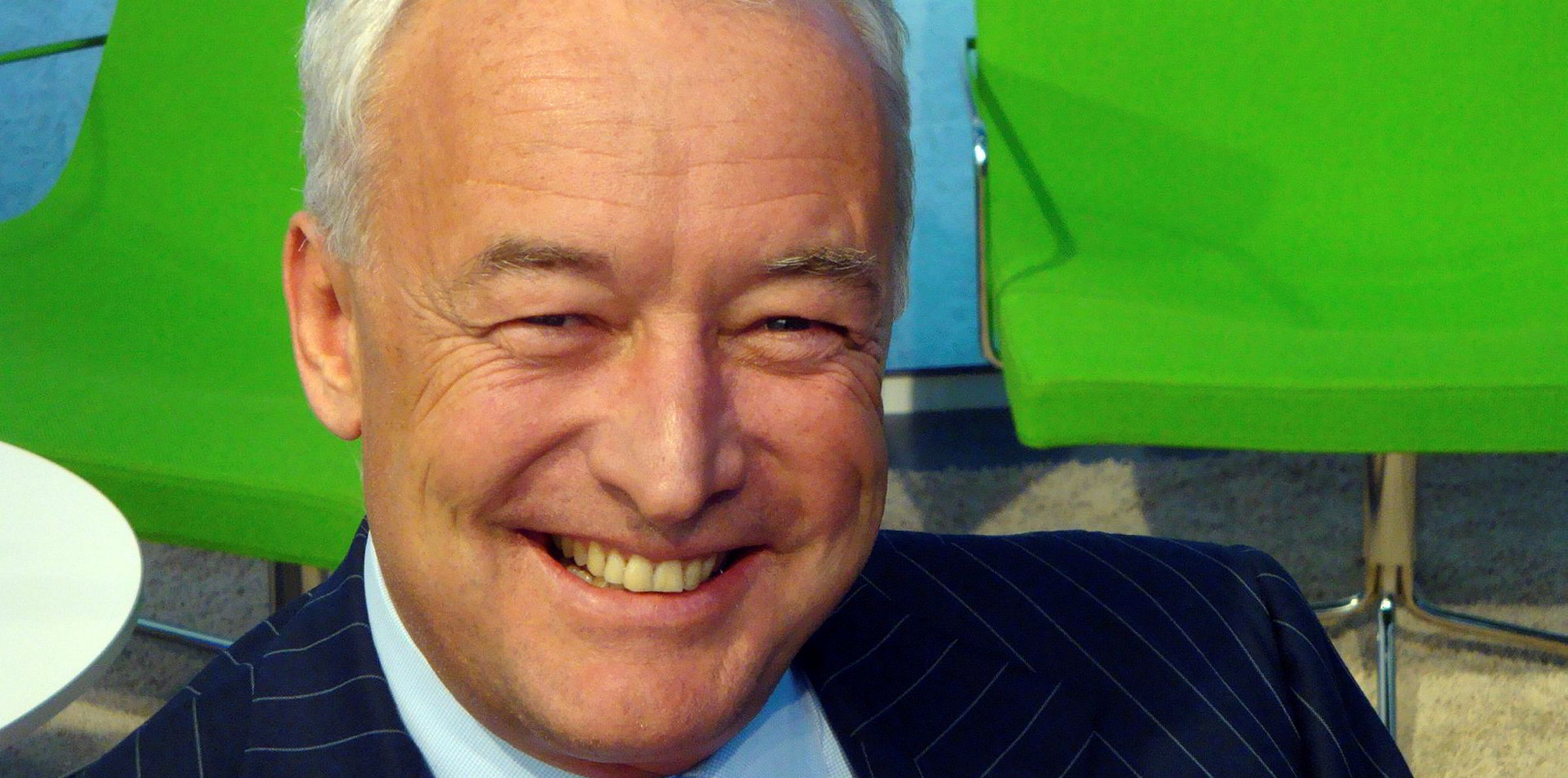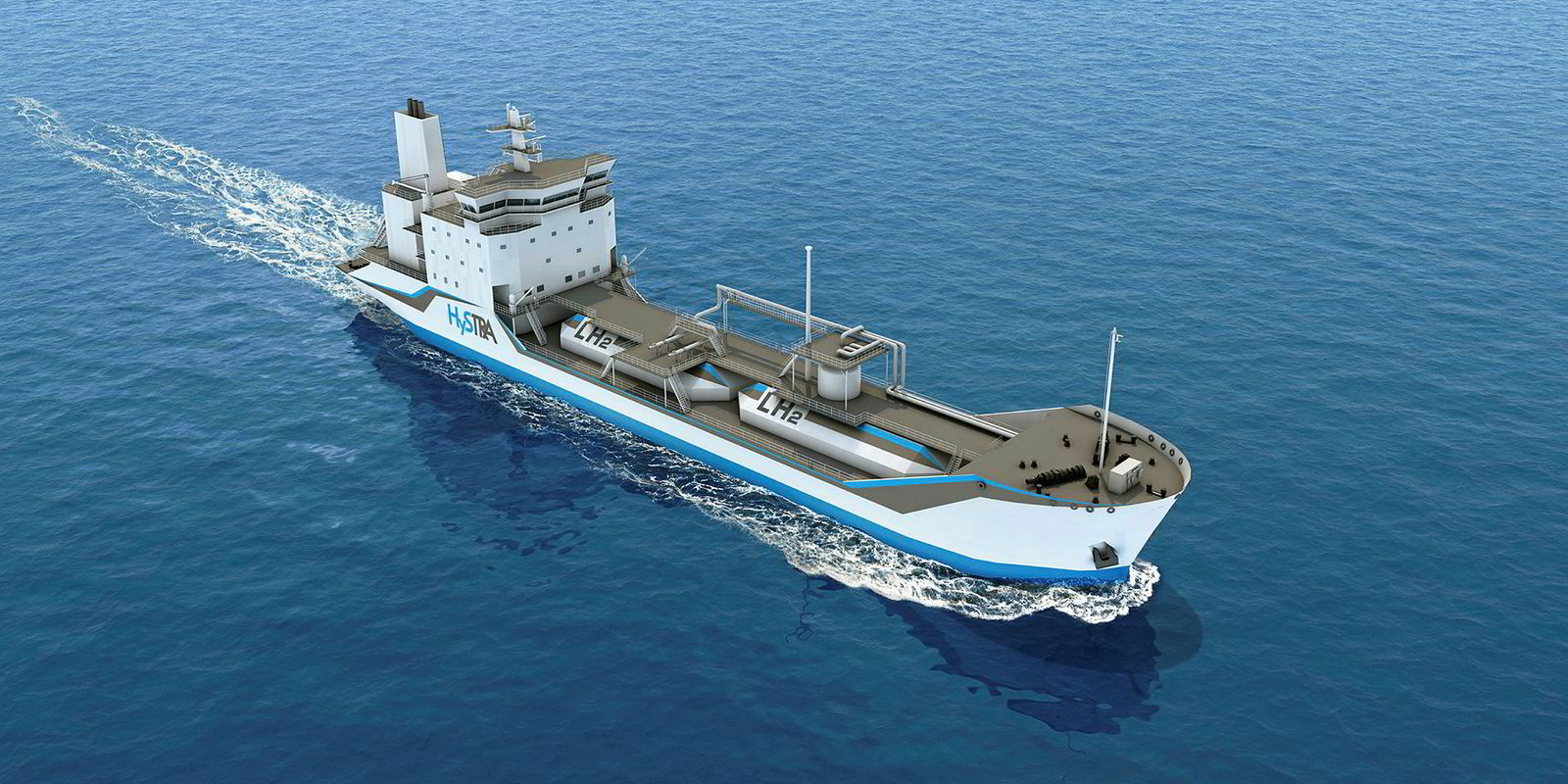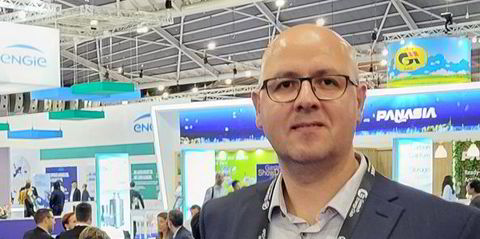Japanese shipbuilder Kawasaki Heavy Industries has launched and named the world's first liquefied hydrogen carrier.
The Suiso Frontier was named at the yard group's Kobe Works.
The yard has still to install a 1,250-cbm vacuum-insulated, double-shell-structure liquefied hydrogen storage tank which is currently being manufactured at its Harima Works, in the forward part of the ship.
The tank corresponds to about 75 tonnes of liquefied hydrogen, which is enough to fill 15,000 tanks on fuel cell vehicles.
The area to the rear of this, where a second tank would fit, is fitted with monitoring instruments.
The newbuilding, which has been developed to transport liquefied hydrogen at a temperature of –253°C, is due to be completed in late 2020.
KHI said once complete Suiso Frontier will be used for technology demonstration testing during the Japanese financial year 2020 with the aim at the establishment of an international hydrogen energy supply chain.
This will involve shipping liquefied hydrogen produced in Australia to Japan.
In association with this a liquefied hydrogen unloading terminal is being built in Kobe City, Hyogo Prefecture, and a brown coal gasification facility is being constructed in Australia.
KHI has been working with Japan’s New Energy and Industrial Technology Development Organization since 2015 to establish a supply chain.
KHI, Iwatani, Electric Power Development (J-Power) and Shell Japan teamed up in 2016 to form the Hydrogen Energy Supply-Chain Technology Research Association (HySTRA), which will be the operating body responsible for the production, handling and transport of hydrogen.
Hydrogen does not emit CO2 or other greenhouse gases and so is one alternative being considered as a fuel for shipping to meet the IMO 2050 emissions targets.
But transporting it presents several new challenges, foremost of which are concerns about its safety.






